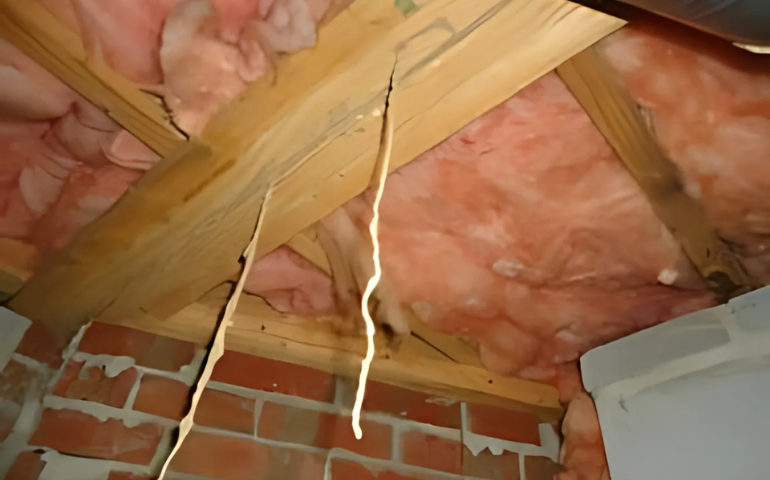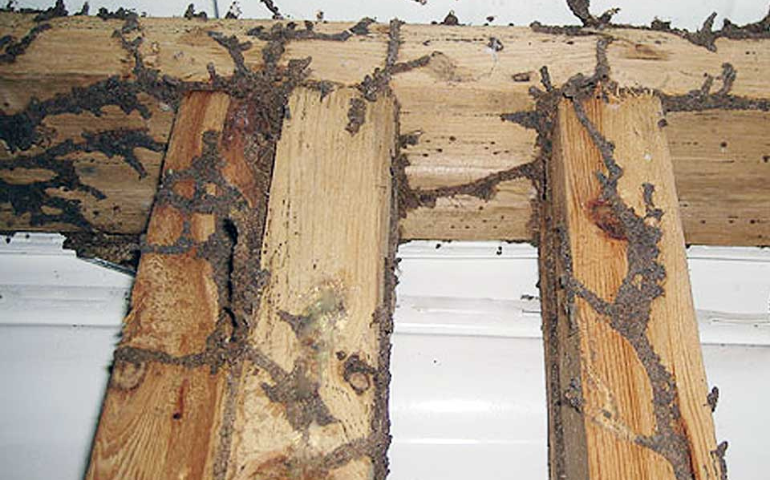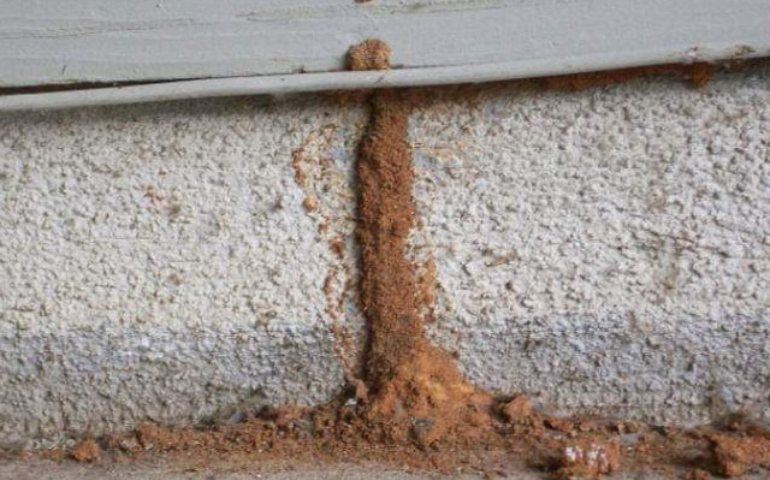What Are Termite Tubes?
Termite tubes, also known as mud tunnels or termite tunnels, are intricate structures built by subterranean termites to create a protected pathway between their nests and a source of food—typically the wooden structures of homes. These tubes are constructed using a combination of soil, wood particles, saliva, and termite excrement.
Table of Contents
Different Types of Termite Tubes
There are various types of termite tubes, each serving a specific purpose:
- Drop Tubes: Formed when worker termites drop from an overhead structure.
- Working Tubes: Constructed as termites forage for food, serving as highways for termite activity.
- Swarm Tubes: Indicative of a mature colony, appearing during the reproductive phase of termites.
What Are Termite Tubes Made Of?
Termite tubes are primarily constructed using a mixture of soil, wood particles, saliva, and termite excrement. The combination of these materials provides a durable structure that protects termites as they travel between their nests and a food source.
What Do Termite Tubes Look Like?
Termite tubes come in different types, each serving a specific purpose in the life cycle and activities of a termite colony. Here’s an explanation of drop tubes, working tubes, and swarm tubes:
1. Drop Tubes:

Appearance: Drop tubes, also known as “fecal pellets” or “kick-out holes,” are short tubes that extend from overhead structures. They are formed when worker termites eliminate their feces or waste materials from the nest above. The pellets accumulate at the base of the tube.
Purpose: Drop tubes are a byproduct of termite activity within the wood or structural material above. They provide a means for termites to dispose of waste materials safely.
Identification: Look for small, cylindrical pellets at the end of these tubes. The presence of drop tubes indicates active termite infestation in the overhead structure.
2. Working Tubes:

Appearance: Working tubes, also known as foraging or exploratory tubes, are the highways that termites construct as they move between their nest and a food source. These tubes can be found on surfaces such as walls, foundations, or other structural elements.
Purpose: Working tubes serve as protective passageways for termites, allowing them to travel safely between the nest and their foraging area. They provide a controlled environment that helps termites maintain the necessary humidity levels.
Identification: Working tubes are typically brown or tan and have a smooth texture. They may branch out in different directions as termites explore for new sources of wood.
3. Swarm Tubes:

Appearance: Swarm tubes are structures built by termites during the reproductive phase of their life cycle. They are usually found near the ground, and they serve as exit points for termite swarmers (winged reproductive termites) when they leave the nest to establish new colonies.
Purpose: Swarm tubes facilitate the emergence of winged termites during swarming events. These events occur when mature colonies release winged termites to mate and establish new colonies.
Identification: Swarm tubes are often seen as small, mud-like structures near the ground. During a termite swarm, winged termites will emerge from these tubes in large numbers.
How Fast Do Termites Build Mud Tubes?
The construction speed of termite tubes can vary based on factors such as termite species, environmental conditions, and the availability of suitable building materials. Generally, termites work diligently to build tubes, and the process can take anywhere from a few days to several weeks.
Remember, if you have concerns about termite tubes or suspect termite activity in your home, don’t hesitate to reach out to Alta Pest Control. Our experts are here to answer your questions and provide effective solutions for termite control.
How to Tell if Termite Tunnels Are Active?
Determining whether termite tunnels are currently active requires careful observation. Here are some signs to look for:
- Fresh Appearance: Active tunnels will have a moist, fresh appearance, indicating recent construction or maintenance by the termites.
- Presence of Worker Termites: If you notice worker termites actively moving through the tunnels, it’s a clear sign of ongoing termite activity.
- Intact Structure: tunnels that are intact and show no signs of damage or disruption are likely actively used by termites.
How to Get Rid of Termite Mud Tubes?
Getting rid of termite tubes is a crucial step in termite control. Here’s what you can do:
- Contact a Professional: Seek the expertise of a termite control company like Alta Pest Control for a thorough inspection and effective removal of termite tubes.
- Address the Underlying Issue: Simply removing the tubes won’t solve the problem. It’s essential to identify and address the root cause of the termite infestation.
- Implement Preventive Measures: Once the tubes are removed, work with professionals to implement preventive measures to avoid future infestations.
Should I Remove Termite Mud Tubes Myself?
Here are some reasons why you should avoid removing termite mud tubes on your own:
- Incomplete Removal: Simply removing the visible mud tubes doesn’t eliminate the entire termite colony. Termites may have established multiple access points, and a DIY removal may not address all of them.
- Risk of Disturbing Termites: Disturbing the mud tubes can alert termites to a potential threat, causing them to abandon the tubes temporarily or redirect their activity. This can make it more challenging for professionals to locate and treat the colony later.
- Limited Effectiveness: DIY removal methods, such as scraping or breaking the tubes, may not be effective in eradicating the termite colony. Termites can rebuild tubes quickly, and the infestation may persist.
- Lack of Preventive Measures: Professional termite control involves not only removing existing tubes but also implementing preventive measures to protect your home from future infestations. DIY removal typically does not address long-term prevention.
- Potential Exposure to Harmful Chemicals: Some homeowners may attempt to use chemicals to treat or remove termite tubes. This approach can be hazardous without proper knowledge and precautions, posing risks to both your health and the environment.
Addressing termite issues requires professional expertise. Alta Pest Control stands ready to provide a comprehensive solution, from thorough inspections and effective removal to addressing underlying issues and implementing preventive measures. Attempting DIY removal poses risks of incomplete eradication, potential disturbance to termites, and limited effectiveness, underscoring the importance of professional intervention.
Have You Seen Termite Tubes? Contact Us ASAP
Your home’s protection is paramount. If you suspect termite activity, don’t hesitate to contact Alta Pest Control. Our experts are here to answer your questions and implement effective termite control solutions, safeguarding your home from these silent invaders. Remember, proactive measures today can prevent significant structural damage tomorrow.
Share article:
